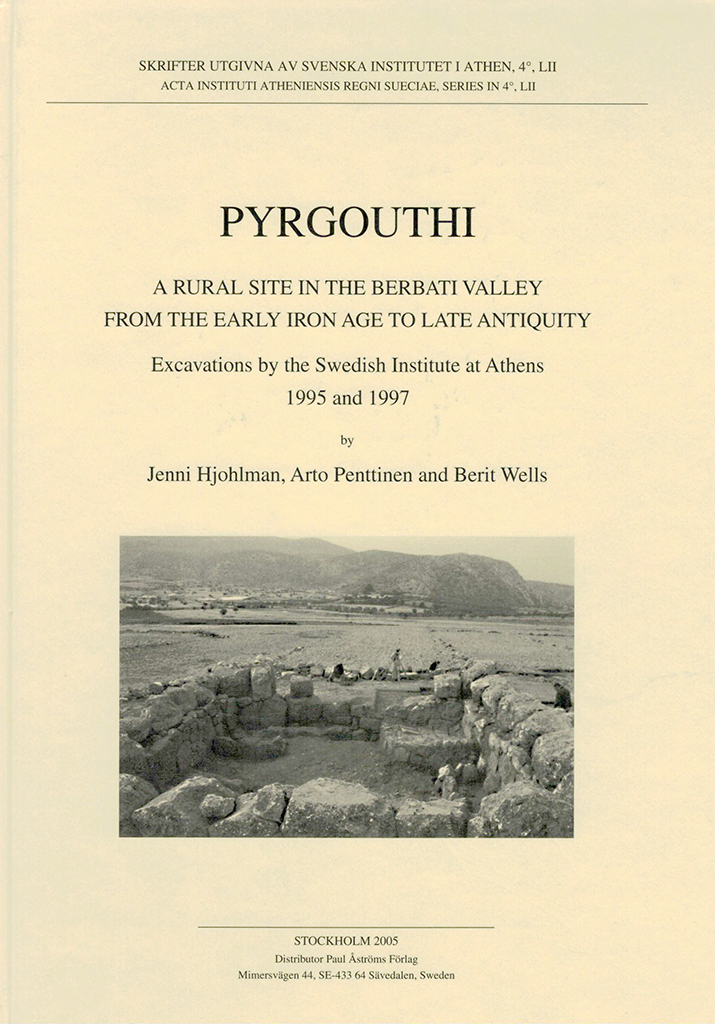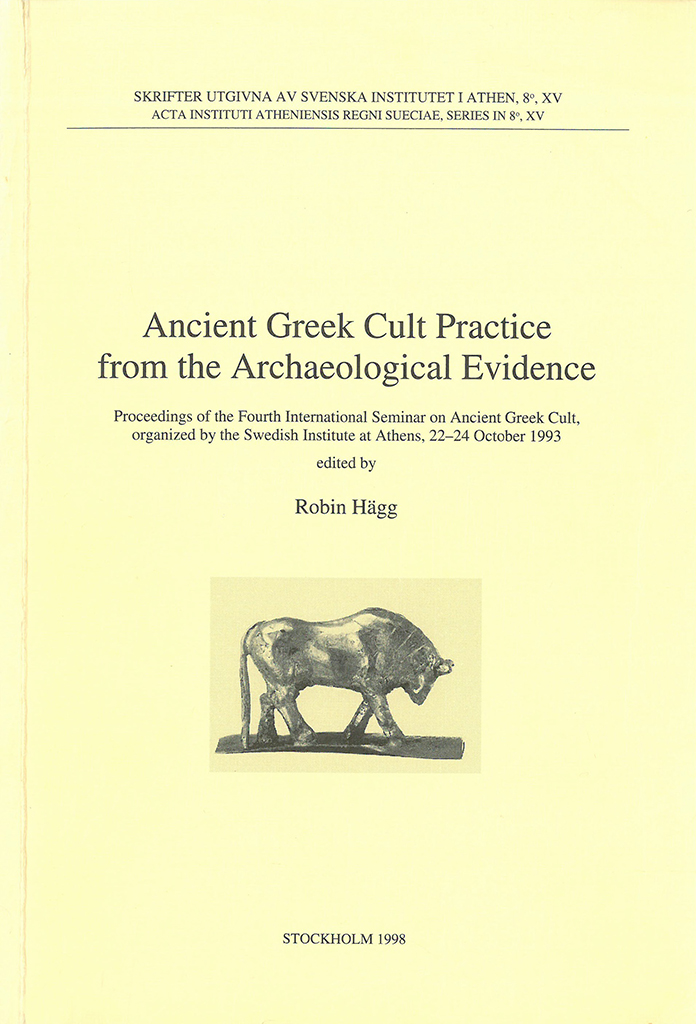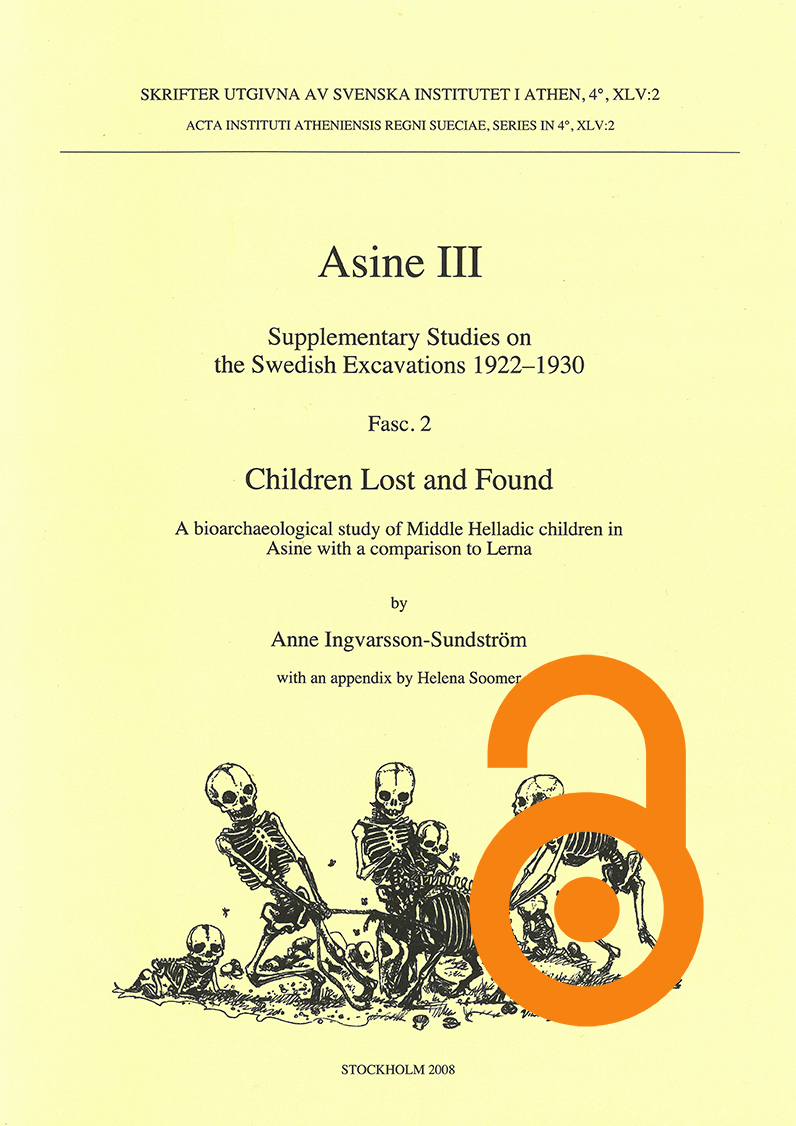Opuscula is published by the Swedish Institutes at Athens and Rome, with the aid of a grant from the Swedish Research Council. Distributed by Eddy.se AB. View journal at ERIH PLUS. All content available with open access. Physical environment and daily life in the Sanctuary of Poseidon at Kalaureia, Poros. The bioarchaeological remains By Arto Penttinen (Swedish Institute at Athens, Greece) & Dimitra Mylona (INSTAP Study Center for East Crete, Greece) Abstract The section below contains reports on bioarchaeological remains recovered in the excavations in Areas D and C in the Sanctuary of Poseidon at Kalaureia, Poros, between 2003 and 2005. The excavations were directed by the late Berit Wells within a research project named Physical Environment and Daily Life in the Sanctuary of Poseidon at Kalaureia (Poros). The main objective of the project was to study what changed and what remained constant over time in the everyday life and in both the built and physical environment in an important sanctuary of the ancient Greeks. The bioarchaeological remains, of a crucial importance for this type of study, were collected both by means of traditional archaeological excavation and by processing extensively collected soil samples. This text aims to providing the theoretical…
Published by the Swedish Institute at Athens. Distributed by Astrom Editions. Pyrgouthi. A rural site in the Berbati Valley from the Early Iron Age to Late Antiquity. Excavations by the Swedish Institute at Athens 1995 and 1997 By Jenni Hjohlman, Arto Penttinen & Berit Wells, with contributions by Yannis Bassiakos, Katie Theodorakopoulou, Hero Granger-Taylor, Sven Isaksson, Petros Lymberakis, Dimitra Mylona, Maria Ntinou, Anaya Sarpaki & George Syrides Abstract This volume presents the results of the excavations in 1995 and 1997 at Pyrgouthi in the Berbati Valley, Argolis, Greece. The toponym is the local denomination for a Hellenistic tower, which has always been a prominent in the landscape. In the surface survey of the valley in 1988–1990 the tower was perceived as part of a Classical farmstead and in the ensuing excavation project it was targeted as such. However, the excavations revealed that this interpretation corresponded to but a fraction of the truth. The tower had been built on a knoll in the center of the valley but the earliest human activities at the site can be dated to the end of the Early Iron Age or the eight century BC. At this point in time, Arto Penttinen argues, the archaeological…
Published by the Swedish Institute at Athens. Distributed by Astrom Editions. Ancient Greek cult practice from the archaeological evidence. Proceedings of the Fourth International Seminar on Ancient Greek Cult, organized by the Swedish Institute at Athens, 22–24 October 1993 Edited by Robin Hägg Abstract A collection of thirteen papers, read at an international seminar in Athens, that deal with various phenomena of Greek cult practice, analyzing the information gained from the archaeological evidence. Among the special topics discussed are cult practice in the acropolis sanctuary of Minoa on Amorgos, the sanctuaries in the Artemision of Ephesos, the role played by osteological analysis in the understanding of Greek sacrificial practice, the interpretation of animal bones and fire traces connected with ritual feasting in the Herakleion on Thasos, ritual and society in Early Iron Age Corinthia, small dedications from the Archaic temple of Poseidon at Isthmia, altars in Greek hero cults, the early history of the sanctuary of Demeter and Kore at Eleusis, a sacrificial area near the sanctuary of Apollo Daphnephoros at Eretria, terracotta plaques and other finds from the sanctuary of Demeter and the Dioscouri at Messene, the interpretation of sickles in Greek sanctuaries, changes in votive practice from Classical…
Published by the Swedish Institute at Athens. Distributed by Astrom Editions and Eddy.se AB. Asine 3. Supplementary studies in the Swedish excavations 1922–1930 Fasc. 1. Supplementary studies in the Swedish excavations 1922–1930 Edited by Robin Hägg, Gullög C. Nordquist & Berit Wells Abstract This is a collection of eleven papers inaugurating a new series of supplementary studies on the material from the old Swedish excavations at Asine. The first is a summary of the work undertaken between 1922 and 1930 and is intended to help in the study of the published reports and of the unpublished documentation. In further papers additional information is given on the Middle Helladic graves of the Lower Town, the Late Mycenaean terracotta head called “The Lord of Asine” is re-studied, and pottery and small finds from Mycenaean chamber tombs are discussed, including some technical aspects, such as the use of tin foil on pots. A group of Mycenaean vases from the village of Zafer Aga is published for the first time. Another paper deals with the animal bones from the Lower town of Asine. Finally, a concordance of the numbers of the graves and skeletons found at Asine is given as a tool for scholars…




